
4 minute read
June 2025 Hybrid & Electric Vehicle Corner
from June 2025 NACAT News
by NACATNews
By Curt Ward, Professor at Joliet Junior College
Teaching the Fundamentals of a Permanent Magnet Drive Motor
As I write this article, our spring semester has come to a close and our summer electric vehicle class has begun. It was exciting to watch our graduates cross the stage and receive the credentials they worked so hard to earn. Over the past few years, I have shared the power flow demonstrators of several different hybrid and electric transmissions. These units have been excellent in helping the students better understand the mechanical operation of the powertrains. When teaching transmissions in our hybrid and electric vehicle curriculum, it has become very clear that our students sometimes struggle to understand the electrical operation of a permanent magnet motor. This month, I will share some of what I changed to help improve their understanding.
One of the greatest challenges when teaching electricity is to make it visual for the learners. The same is true for magnetic fields. With funds from an electric vehicle grant, I was able to purchase an electromagnetism trainer. The trainer, in combination with a digital oscilloscope, allows the students to create, test, and measure electromagnetism as it is applied in modern hybrid and electric vehicle drive motors.
The students complete several tasks that show magnetism is the link between mechanical energy and electricity. One of the basic tasks involves passing a conductor through a coil of wire and observing the voltage on the oscilloscope (See Figure 1- Coil and Figure 2 - Scope). The students can see both positive and negative voltage depending on the direction the conductor passes through the coil. This demonstrates that the direction of the winding affects the magnetic field generated.
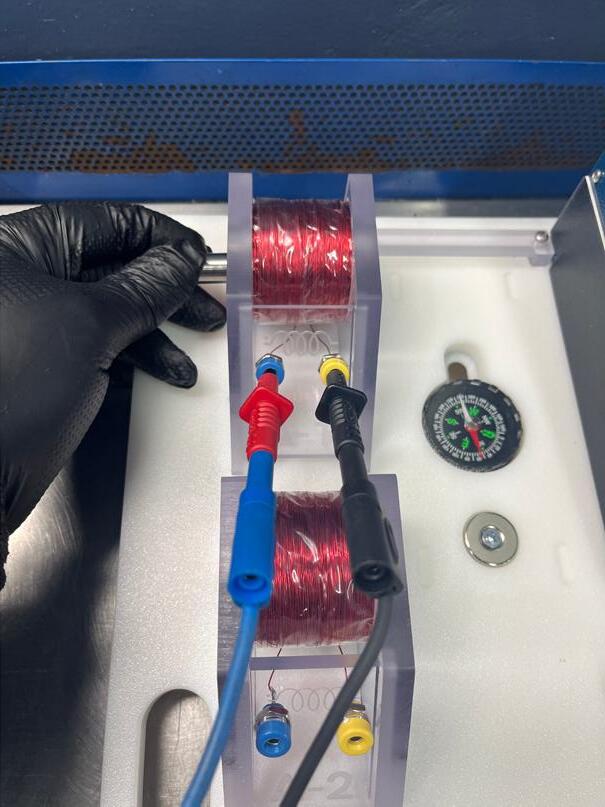
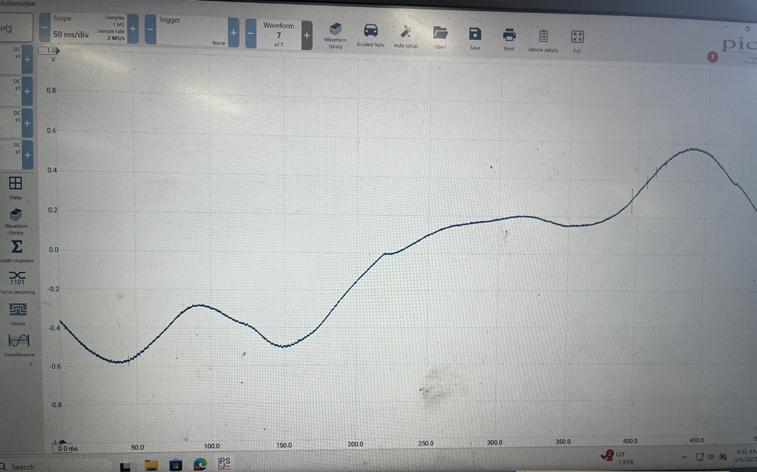
The second basic task is to add power to the coil and create an electromagnet. A simple compass is placed on the coil (See Figure 3 – Polarity). As the polarity of the power supply changes, the polarity of the compass changes. This is a very visual way of demonstrating the Right-Hand-Rule and the Left-Hand-Rule as it applies to motor and generator operation.
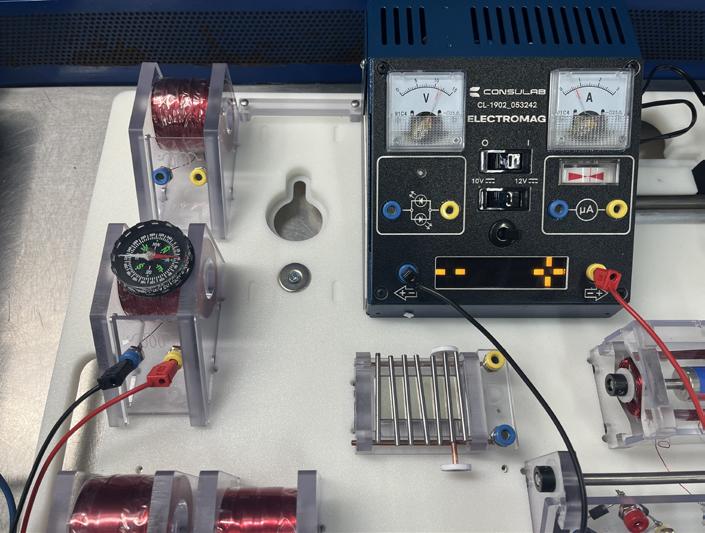
A more advanced task is to show the operation of a permanent magnet motor. The scope is connected to the single-phase permanent magnet motor. The motor is turned by hand and the student can see the AC waveform on the screen (See Figure 4 – Motor and Figure 5 – Waveform).
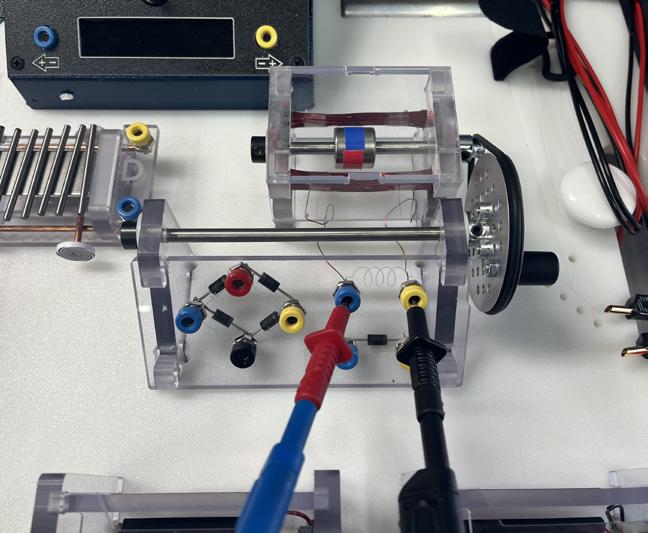
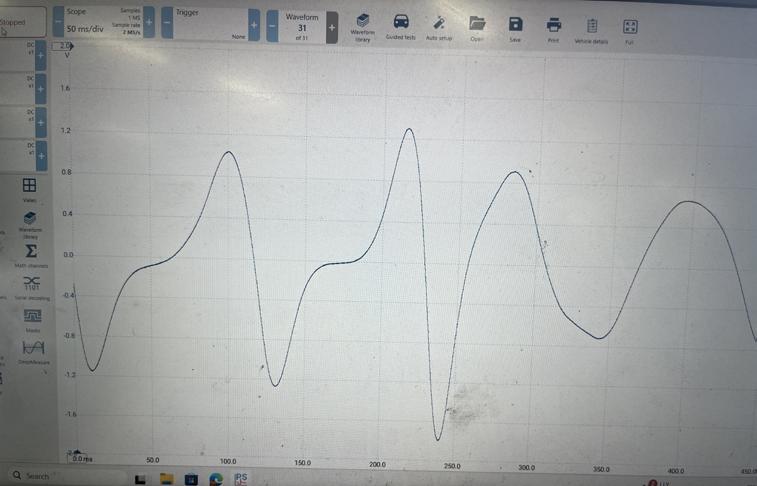
Once the students demonstrate an understanding of the fundamental tasks, the learning continues on the transmission power flow demonstrators and finally on the vehicles. This three-tiered process of learning has proven to be very effective in helping the students better understand the operation of a permanent magnet motor.
The trainer we purchased can also be used to demonstrate mutual induction, half and full-wave rectification, DC motor operation and more. These features can be very useful when teaching ignition coil, alternator, and starter motor operation. Early feedback on the use of the trainer has indicated that the visualization of electromagnetism has improved the understanding of the operation of permanent magnet motors. I am certain that similar results will be achieved when the trainer is used in the basic electrical and engine performance classes.
I will finish this article with the same offer I make after each of my presentations. If you are interested in getting started in the process of adding hybrid and electric vehicles to your curriculum or want more information, please feel free to reach out. I am more than willing to sit down in-person or online and share my experiences. Are you looking for a classroom textbook? Reach out to Pearson and ask for a review copy of the all-new Electric and Hybrid Electric Vehicle text that Jim Halderman and I co-authored. It is a comprehensive text covering all the latest information on the subject.



